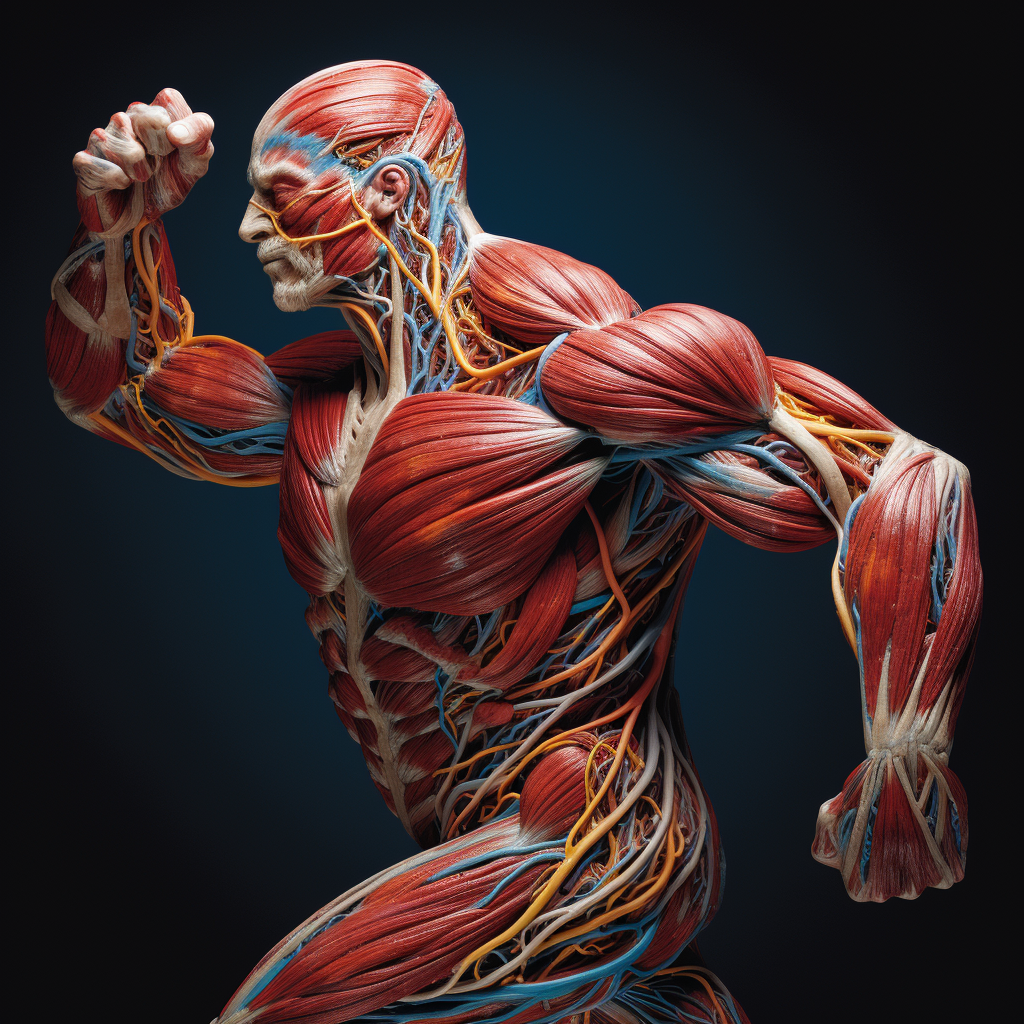The muscles in our body consist of different types of muscle fibers. This difference between muscle fibers affects the amount of force you can exert for specific activities.
Primarily, two types can be distinguished: fast twitch (FT) and slow twitch (ST). Fast twitch fibers are used when we need to deliver explosive power, while slow twitch muscle fibers are engaged in prolonged activities such as running and other forms of cardio training. In this article, we will briefly discuss the types of muscle fibers. For a more comprehensive description including the scientific studies conducted on this subject, we refer to the article “Different Types of Muscle Fibers.”
Types of Muscle Fibers
In the introduction, we described that there are two types of muscle fibers in the body. Both are used for different purposes:
Type I: slow contraction speed, used in aerobic activities.
Type II: fast contraction speed, used in anaerobic activities.
Whether Type I or Type II is used depends on the threshold value. This is the electrical resistance that a motor nerve transmits to the motor unit. This means that some motor nerves are more likely to transmit the impulse than others. If you want to move a small amount of weight, a signal is sent from the central nervous system to the muscle fibers with a lower action potential.
Red Muscle Fibers
Another term for Type I muscle fibers, or slow twitch, is “red muscle fibers.” This term is attributed to the fact that these muscle fibers quickly become red due to containing a lot of myoglobin. These muscle fibers can endure for a long time and are resistant to fatigue. Hypertrophy of these red muscles can only occur through an increase in the number of mitochondria. Hypertrophy through increasing the number of muscle cells can only occur in white muscle fibers, or Type II.
White Muscle Fibers
Another term for Type II muscle fibers, or fast twitch muscle fibers, is “white muscle fibers.” This fast twitch tissue is characterized by its explosive power. Many strength athletes have a lot of fast twitch fibers which can significantly increase through hypertrophy. The energy systems used by white muscle fibers are the lactic acid system and the ATP system.
Muscle Mass Growth
The muscles in your body are made up of many muscle fibers. Each person has a different distribution and quantity of muscle fibers. You can only partially change this distribution through strength training. With strength training, you increase the already existing muscle mass. You train the muscle mass with a resistance greater than the muscles can handle (“overload“). This prompts the body to seek a new balance and to become stronger to handle this load next time.
Difference Between Muscle Fibers
| Type I Muscle Fiber | Type II Muscle Fiber |
| Smaller muscle fibers | Larger fibers |
| Limited sarcoplasmic reticulum | Large sarcoplasmic reticulum |
| Extensive capillary network | Small capillary network |
| Many mitochondria | Few mitochondria |
| High amount of myoglobin | Low amount of myoglobin |
Application
When comparing various athletes, you will see that they have different compositions of muscle fibers depending on their sporting activities. For example, marathon runners naturally have more red muscle fibers in their bodies for endurance activities, while bodybuilders will have many more white muscle fibers in their bodies, often developed through hypertrophy.

